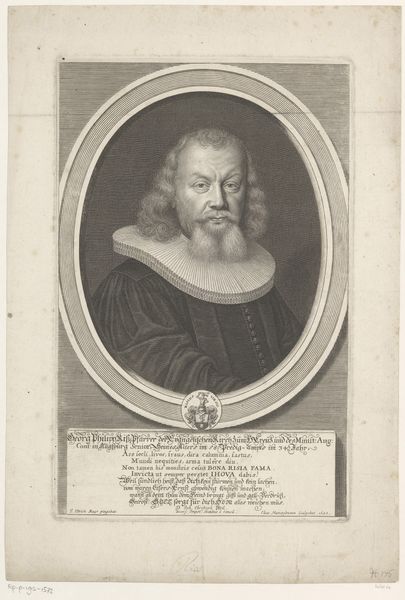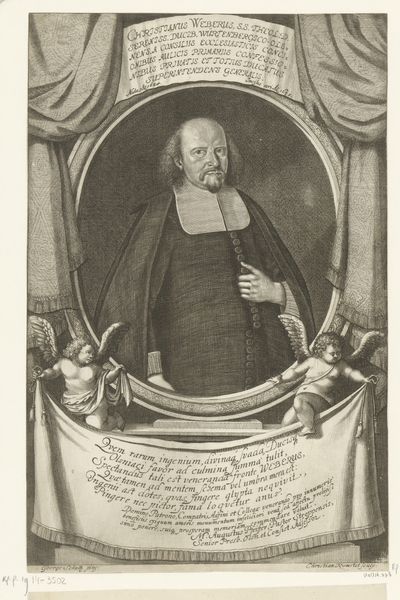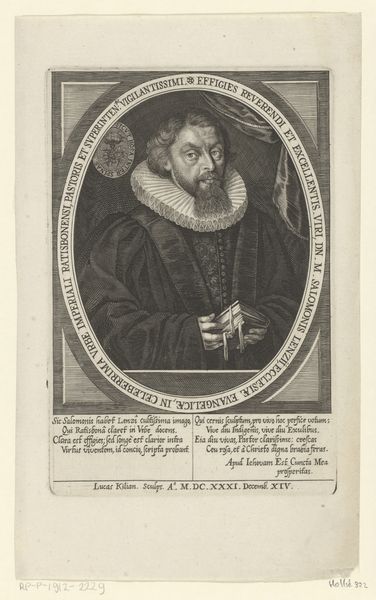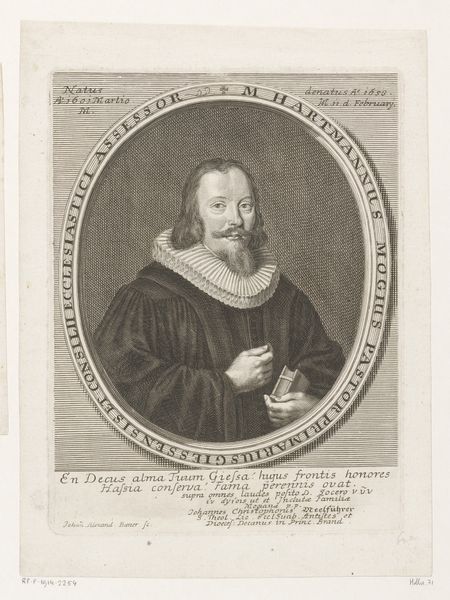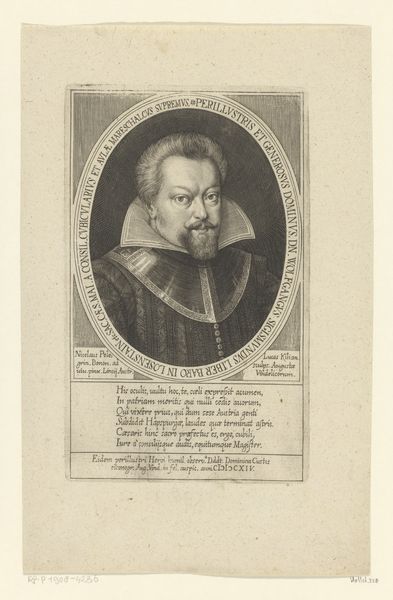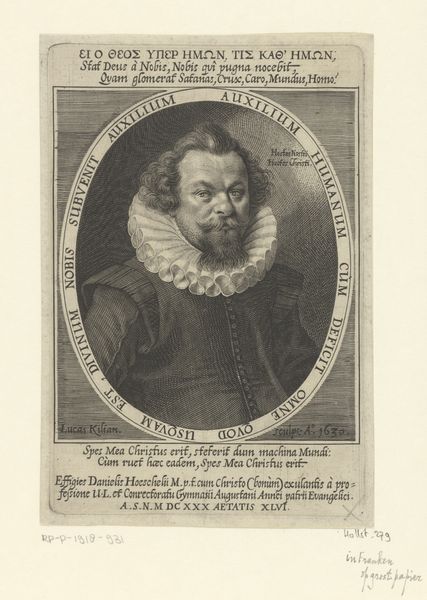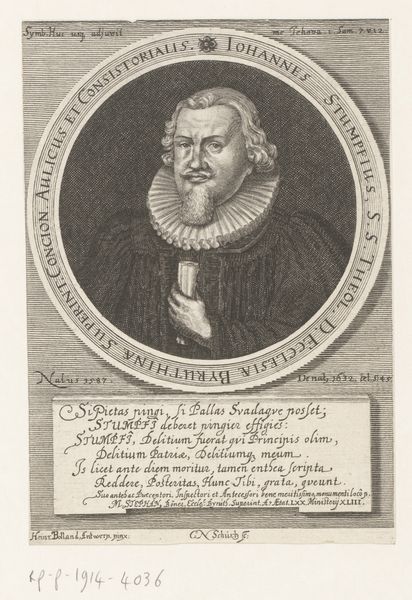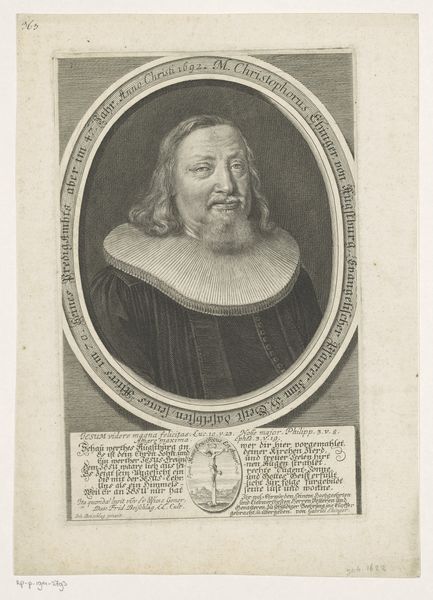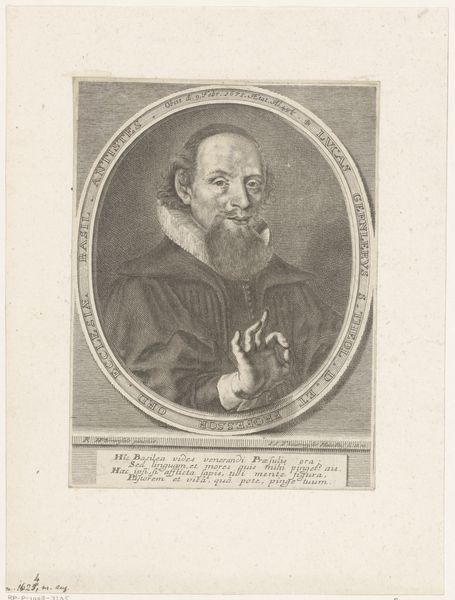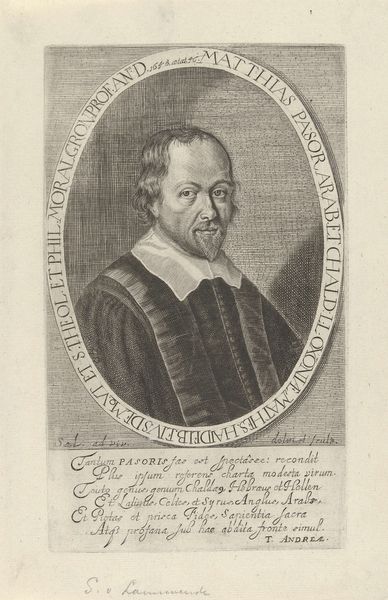
print, engraving
#
portrait
#
aged paper
#
toned paper
#
light pencil work
#
baroque
#
photo restoration
# print
#
old engraving style
#
personal sketchbook
#
engraving
Dimensions: height 198 mm, width 139 mm
Copyright: Rijks Museum: Open Domain
This is Nicolaus Häublin’s portrait of Johann Albrecht Spiess at the age of 50. Spiess's stern gaze and the formality of his attire reflect the social norms and expectations of the time. Consider how the symbols and inscriptions included in the image work to construct and reinforce Spiess’s identity. His status is asserted through carefully chosen visual elements, such as his elaborate ruff and the heraldic crest, which were signifiers of wealth and nobility. But what happens when we consider the emotional dimensions of representation? How might Spiess have felt about being immortalized in this way? Did he see himself represented accurately? In portraits like these, individuals of privilege sought to control how they were seen and remembered, solidifying their place in the social hierarchy, which Häublin’s portrait facilitates by affirming conventional notions of status and authority.
Comments
No comments
Be the first to comment and join the conversation on the ultimate creative platform.
